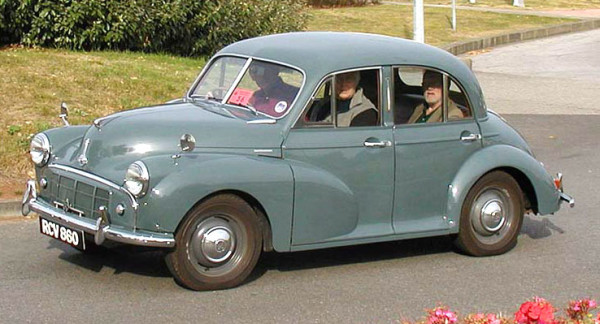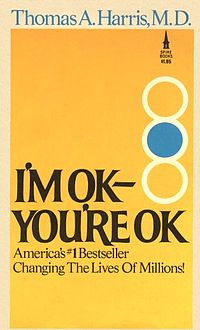 In this lesson you’ll learn the fundamentals of how and where to use 7b9 chords.
In this lesson you’ll learn the fundamentals of how and where to use 7b9 chords.
Say you’re playing a tune in a minor key. The dominant 7th chord usually looks like this: G7b9 or G7b13.
Here I’ll show you why that is, and later, I’ll show you how you can also use these 7b9 chords in major keys.
From whence do you hail?
Here’s the C Harmonic Minor scale: C D Eb F G Ab B C
The Dominant chord is built on the 5th degree of that scale. Start on the C and count up 5: CDEF – G.
Arranging the notes from G in 3rds [from G, count up 3 notes to B, then again 3 notes up to D, etc.] gives you this:
G B D F Ab C Eb
The first 4 notes – GBDF – make a G7 chord. This is our dominant 7th. Chord V.
The other three notes are Ab, C, and Eb. The Ab is the b9, The C is the 11th, The Eb is the b13.
If you have a 3rd already in the chord you normally don’t add the 4th/11th. So forget about the 11th.
On a G7, if you add extensions b9 and/or b13, that will give you the classic sound of the V chord in a minor key.
Here are some voicings:
G7b9
- 3 X 3 4 3 4 [use your thumb for the low G]
- X 10 9 10 9 10 [this one is like the B7 shape you first triumphed over but with the extra magic note added]
OK, now I want to show you how to use 7b9 chords in major key harmony.
From Minor to Major
First you have to know about Secondary Dominants.
Here are the chords in C major:
- C∆
- Dm7
- Em7
- F∆
- G7
- Am7
- Bm7b5
See the G7? That’s called the Primary Dominant. Chord V of the key we’re in. G7 to C. You’ve played this a billion times.
Now, Secondary Dominants are dominant 7th chords that go to all the other chords in the key of C.
So the second chord, Dm7, has its dominant chord which is A7.
The Em7’s dominant is B7
The F∆’s dominant is C7
The G7’s dominant is D7
The Am7’s dominant is E7
You wouldn’t in your right mind modulate TO a m7b5 chord. You might do that kind of thing if you were in a metal band and had no friends and were a bit stoned, but it’s not the kind of thing a Dragons’ Den watcher would do.
Chordal Charity
 Now these secondary dominants are charitable chords.
Now these secondary dominants are charitable chords.
They, by their authoritative dominance, offer a temporary home and some self worth to these errant diatonic children.
When you use a secondary dominant, it’s like you are bestowing more worth onto the target chord. It’s like an OBE, or a BAFTA. An affirmation of, ‘y’know, Am7, you’re OK. I like you’.
NOW then, the target chords can be split into two types: Major and Minor.
We have F∆ and G7 in the ‘major type’ chord camp; and Dm7, Em7, and Am7 in the ‘minor type’ camp.
When a dominant chord is going to one of the minor type chords, it takes on the characteristics of a classic minor key dominant, i.e., it’ll be the kind of dominant that has a b9 or a b13, or both.
THIS is the classic place where you can use 7b9 chords.
Ok, hope that gives you an idea of how to use 7b9 chords. There are other ways these chords can be used, and you can change the rules and do whatever you like, but I think it’s good to know the usual way of doing this, then you can notice the places where this ‘rule’ is broken.
Good luck!
Mike
Hey, now you’ve come this far, why not join ElectricCampfire and I’ll show you TONS more if this kind of thing. For example, there’s a whole course on Melodic Minor where I show you all the beautiful sounding chords within the scale, how to apply those sounds to standards, & how to play lines. Also I’ll answer ANY questions you have anytime you want. (plus there’s a great secret voicing that you can use to quickly access ALL the sounds!) Click here to find out more
Yep, those voicings are good too :)
Seems strange to play G7b9 as you’ve described above, that is:
3 X 3 4 3 4 [use your thumb for the low G]
X 10 9 10 9 10 [this one is like the B7 shape you first triumphed over but with the extra magic note added]
In my experience, G7b9 is normally played as Ab7dim, or:
4 x 3 4 3 x (which requires no funny fingering with the thumb)
x 11 12 11 12 x
I like that thought. Right now I can do it with a few seconds thought, but it’s only just hit me, so I’m happy with that. I can also incorporate it into standards that I know, seeing where it works where it doesn’t. And revisiting sheet music to spot those 7b9>7m transitions and understand why they’re there. All geared towards practical application.
I am keen to check out those dominate lessons. I have always been a bit baffled by the diminished so I’ll see what further enlightenment they bring.
What can you do right now? Take that and expand on it one little step, but make sure you’ve got SOMETHING you can do right now.
When you’ve got something like the diminished, which you can use in MANY different ways, it’s really easy to get lost in the possibilities, and miss having it be practically applicable. [see the dominate the diminished lesson, too]
So, to counter this, I always try to ask: ‘What can I do NOW?’
Not yet … but it will be quite easy to embed
Can you play it without a second’s thought?
Open strings?
Fret positions above 12?
Help. He’s a madman!
Where’s the safety in that?
I had a blinding flash of the obvious last night while playing around with this stuff.
If I’m play a dim7 as a rootless 7b9 (3 5 7 b9) it is easy as pie to find the root of the 7b9. One of the notes I’m playing has to be the b9 of the 7b9, so there will always be a 7b9 root one fret below each of the notes. That’s why it should be easy to find one leading to a m7 for a V/II, V/III etc – find a dim7 that sits with one note a fret above the 5th of the m7. Am I making sense?
Sounds good. you could do G7b9 like this X 13 0 0 0 13. Tons of things you can do by using the open strings and voicing the chord any way you want.
Had some fun with the V7/II-7, V7/III-7, V7/IV∆, V7/V7 last night. Even just hearing the 7(b9) as a dominant leading to a minor and getting that sound into my psyche. I shall start popping it in all over the place to see how it works.
Couldn’t find any really useful voicings for all 5 notes (1,3,5,b7,b9). Plenty of ‘nearly’s that Tal the Octopus might manage, but not me. I’ll stick with the diminished and rely on a bass player.
What I do need to do though is cement in finding the positions of those diminished chords for the roots. Like the G7(b9) being x x 3 4 3 4 (can’t bend my thumb over for the bass string).
It might be more useful to work them out in relationship to where I’m going. So if I were going G7(b9) > Cm, think about going to a x 3 x 3 4 3, and train myself that there is a x x 3 4 3 4 I can put in front of it. Or think about the 8 x 8 8 8 x, with a x 8 9 7 9 x available before it.
Incidentally, I think one of the first lessons in a book I got hold of by young Joe Satriani was on ‘smart fingers’ and featured practicing 2 3 1 2 x x -> x x 1 2 1 2 -> x 3 4 2 4 x -> x x 4 5 4 5, which, If I’ve written it down correctly should be four voicings of a C/F#/Eb/A diminished, or a rootless Ab7(b9). Good exercise for dexterity.
Nice, I like that one. Especially if the focus is on the Ab to G
erratum – I meant G7-9 of course
Simple pattern (am I allowed to say that??) for moves on top 3 strings, eg Gm7-5 (B etc dim) to Cm
797 / 10 9 10 to 888
Phil Gould
No probs :) Re dominant question, yes that’s it. In roman numeral analysis you can write A7b9 to D-7 in the key of C as: V7b9/II-7. Say it like: ‘five seven flat nine of two’. Or ‘five of two’ for short. [The V chord of the II]
So:
V of III
V of IV
V of V
etc.
Write like this:
V7/II-7
V7/III-7
V7/IV∆
V7/V7
etc.
Absolutely! The Wes version? I think he harmonises much of the tune with dim7 voicings. Which Phil are you?!?
Well, first of all thanks for following up on that.
Secondly – you’re older than you look (ref the Moggy)
Quick question. Secondary dominants. “Em7’s dominant is B7”. Is that simply taking the dominant 7th from the fifth of the chord (rather than any other kind of seventh) because we are looking for a V->I (or V->i)?
When playing with a bass player I like to play the diminished chord off of the 3rd on the top 4 strings. As you can keep the shape of the chord and move it up or down a minor 3rd it helps when comping something fast like Caravan, which we played yesterday afternoon.